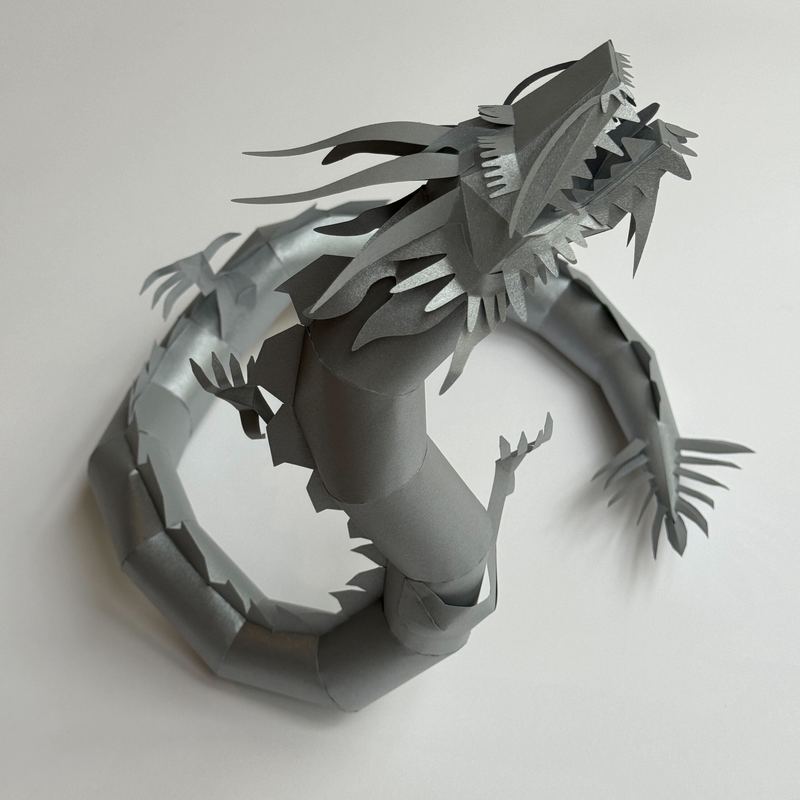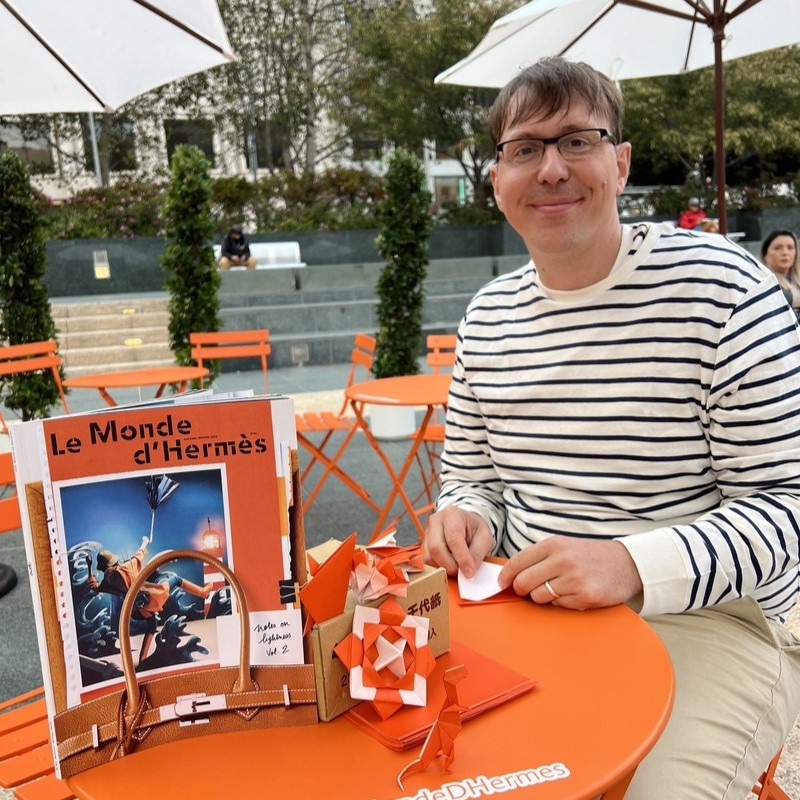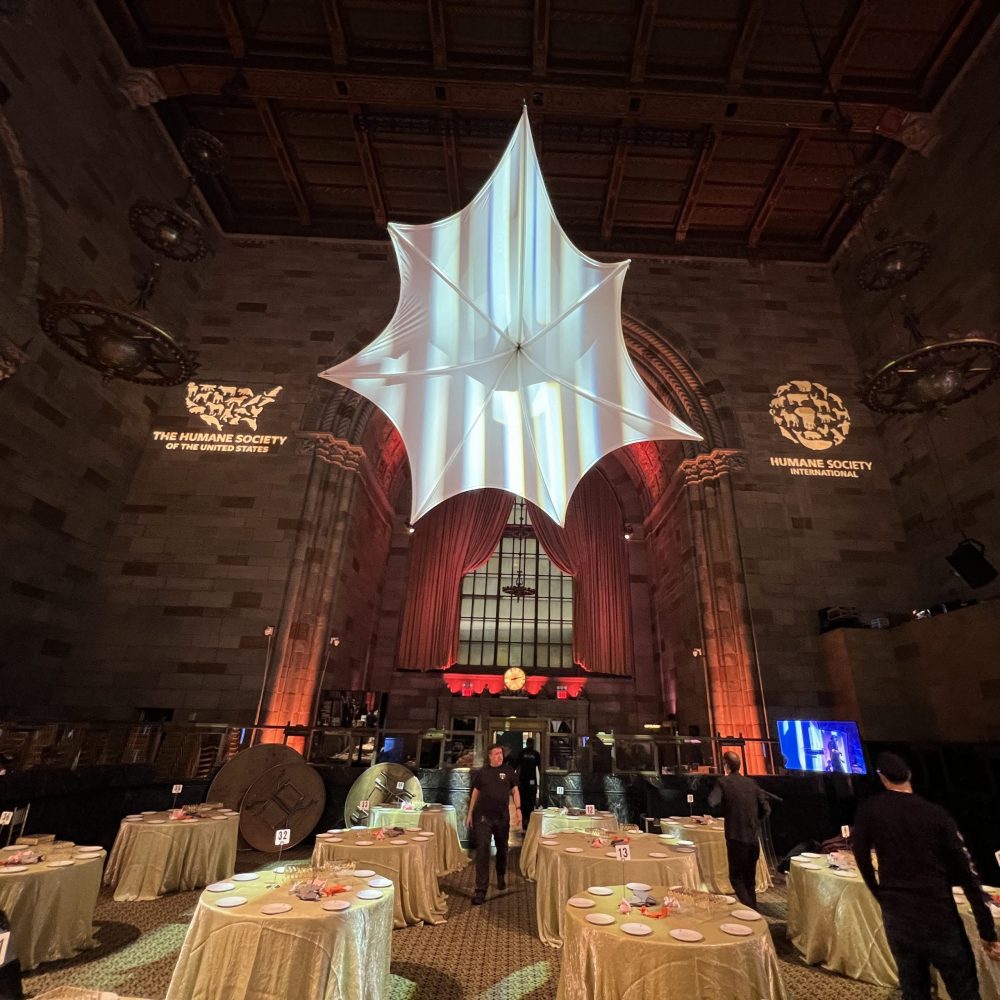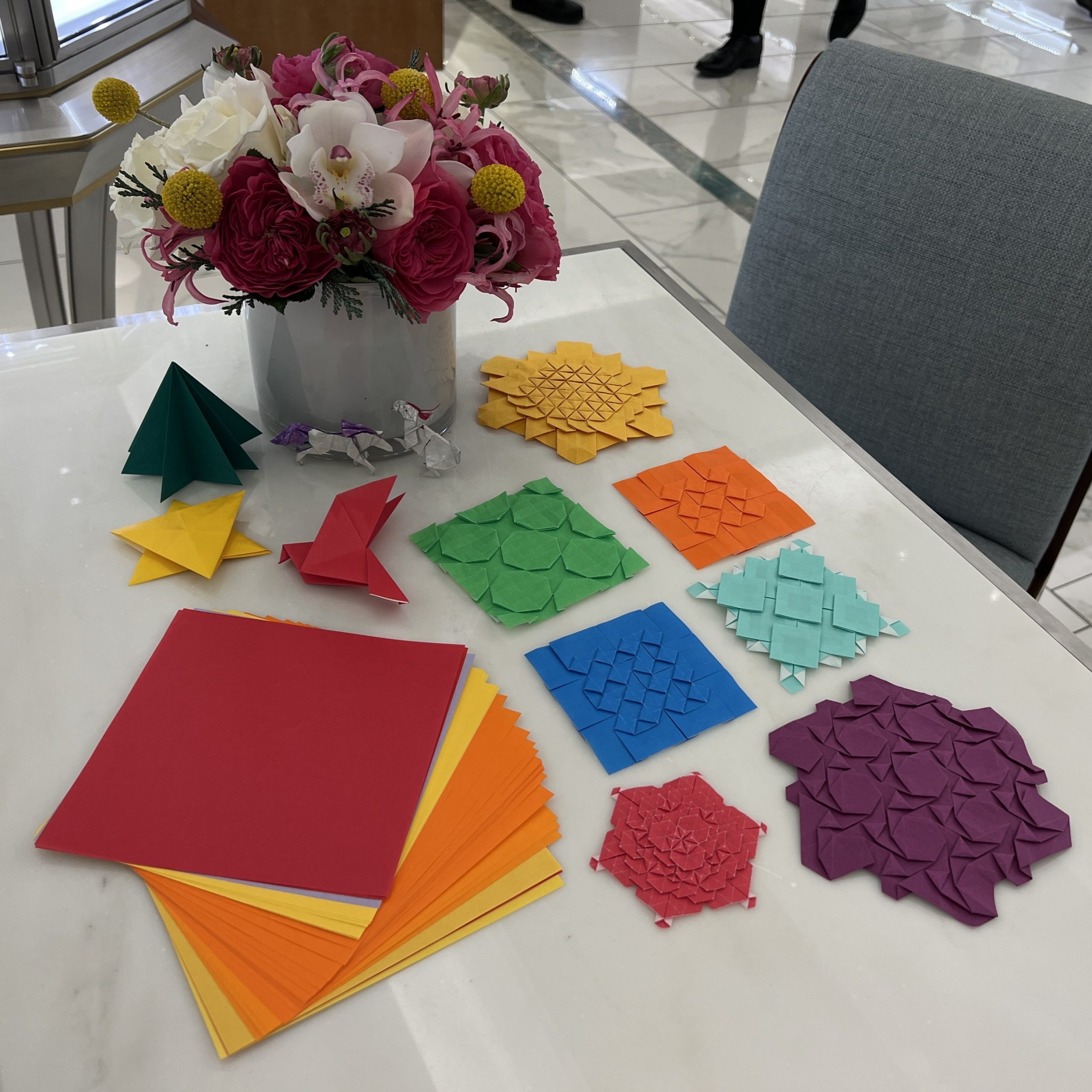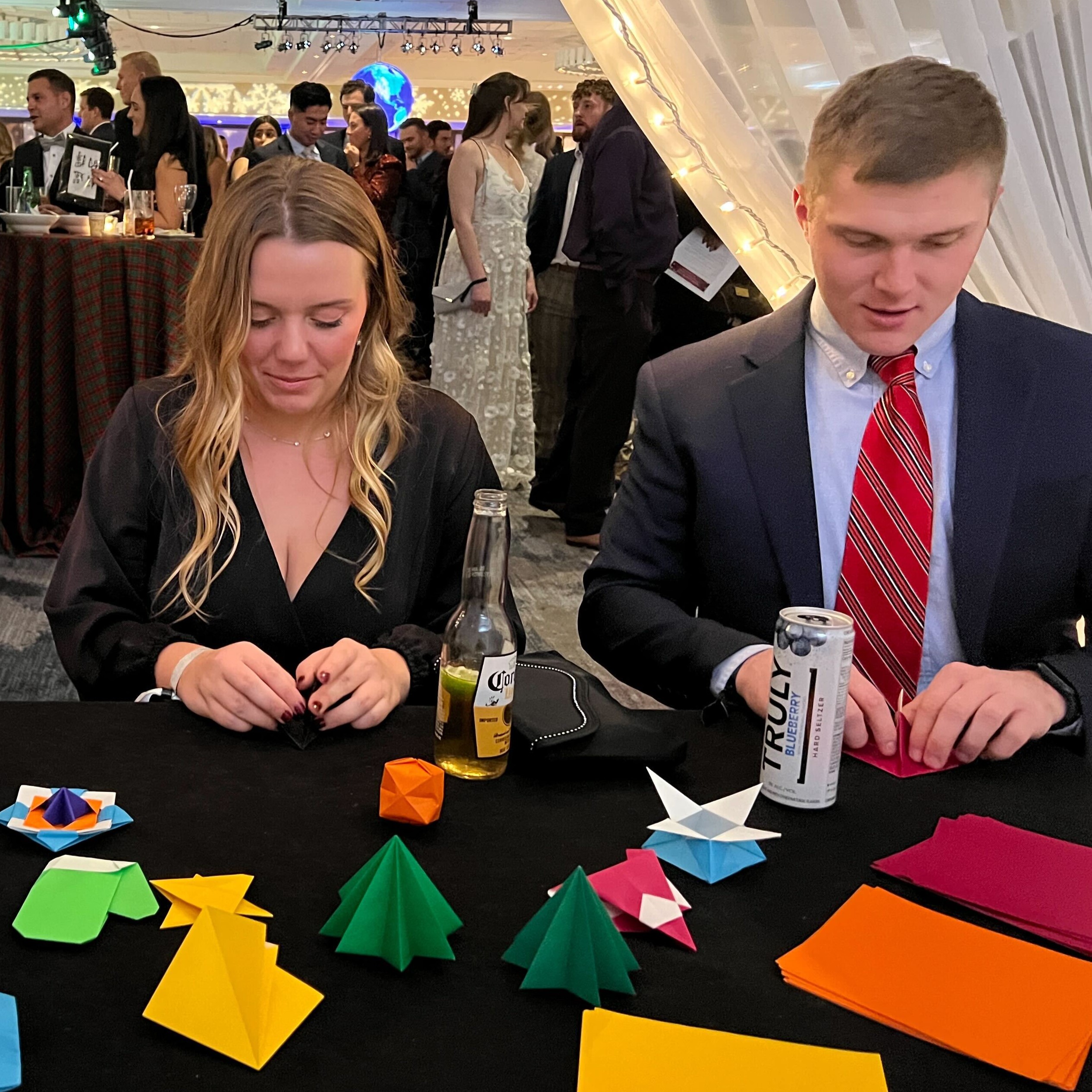
This instagram post was the result of months of very hard work. It is from the prestigious “Year of the Dragon” Gala presented by the Asian Cultural Council. But we very nearly didn’t get here. It was the result of a lot of expertise and skill from Frank Ling.
Since he arrived at Taro’s Origami Studio in 2012, Frank Ling has designed a number of impressive projects. He is uniquely gifted in design via computer renders and building papercraft with origami qualities. Specifically, the Muji and Regent projects where both massive productions, with many rounds of revisions and client imput. Earlier this year, after having reviewed some of these projects, Taro’s was approached by the folks at the Rise and Set Agency to dream up a centerpiece dragon for the annual Asian Cultural Council Gala. The gala took place in the world-famous Rainbow Room at 30 Rockefeller Plaza.
The goal of the Asian Cultural Council advance international dialogue, understanding, and respect through cultural exchange activities in Asia and the United States to create a more harmonious and peaceful world. For the gala they wanted to draw on both the Chinese Zodiac, (this was the year of the dragon) and the ancient art of origami.

1. BRAINSTORMING
To begin with the team had a very specific goal in mind. There would be a terrarium with a small tree growing in the center of the table, and they wanted an origami dragon to curl around it.
The original ask was for 25 dragons made from traditional origami techniques. The inspiration for the look of the dragon came from Joe Adia, a former designer at Taro’s. His model has a lot of length, which is great for curling around the glass. The Taro’s team got to work designing and folding different dragon models that they could make large enough and in high enough numbers.
2. A DESIGN PIVOT
After the first round of designs, it became clear that the client wanted something a little more lifelike. So in order to make the dragons larger and more cylindrical, the Taro’s team pivoted to papercraft. This is a great way to get the orgainic look of traditional origami without the limits it places on size, and volume. Frank looked at many reference images like the ones below, to see how to bring a Chinese dragon to life.
3. EVOLUTION OF THE RENDERS
Once the decision to go with papercraft was made, Taro’s began the computer design and rendering process. Frank skillfully built an entire dragon model from scratch in a computer program. This came with a bunch of back-and-forth conversations to make sure everything was just right. As you can see in the renders below the posture of the dragon was quite specific. The goal was to make the dragon upright, but also to provide many viuewing angles of the terrerium it was in front of. The model also had to engage people all around the circular table so it had to look good from every angle. At the end of the process, everything from the head to the toes was fine-tuned so that it fit the client’s needs.
4. BUILIDING A PROTOTYPE
Next was the part all of us here at the origami studio love – making a full prototype. For the first time we get to cut out and craft the full version of a project and see what it looks like outside of a computer screen. To creat the full prototype, a finalized terrerium was sent from the great people at Terrart NYC. They are the folks who designed and made the final terrariums for the day of the event. This alllowed the team to make sure everything fit properly and securely. As you can see below the model looked great and was approved for a full scale production run.
5. PRODUCTION
After the prototype was approved by the client, full-scale (pun intended) building operation began. Each dragon took in excess of 2 hours to cut, crease, shape and assemble. In all over 50 hours of work was dedicated to creating the 25 final models. The paper was a shiny silver metallic cardstock, so that it gleamed in the lights, and was also rigid enough to survive transport.
6. DELIVERY AND FINAL TOUCHES
The last thing to do was to carefully box, package and drive the models to the rainbow room. Once there, Frank helped affix each of the dragons to the terreriums and get everything in place for the big night. The views from the top of 30 Rockefeller are second to none.
After the event the client got back in touch to say that everything went well and people really enjoyed to entire project. We here at Taro’s Origami Studio are glad we were able to help create something so unique and memorable for this project. Take a look below at the final dragons and gala.

























